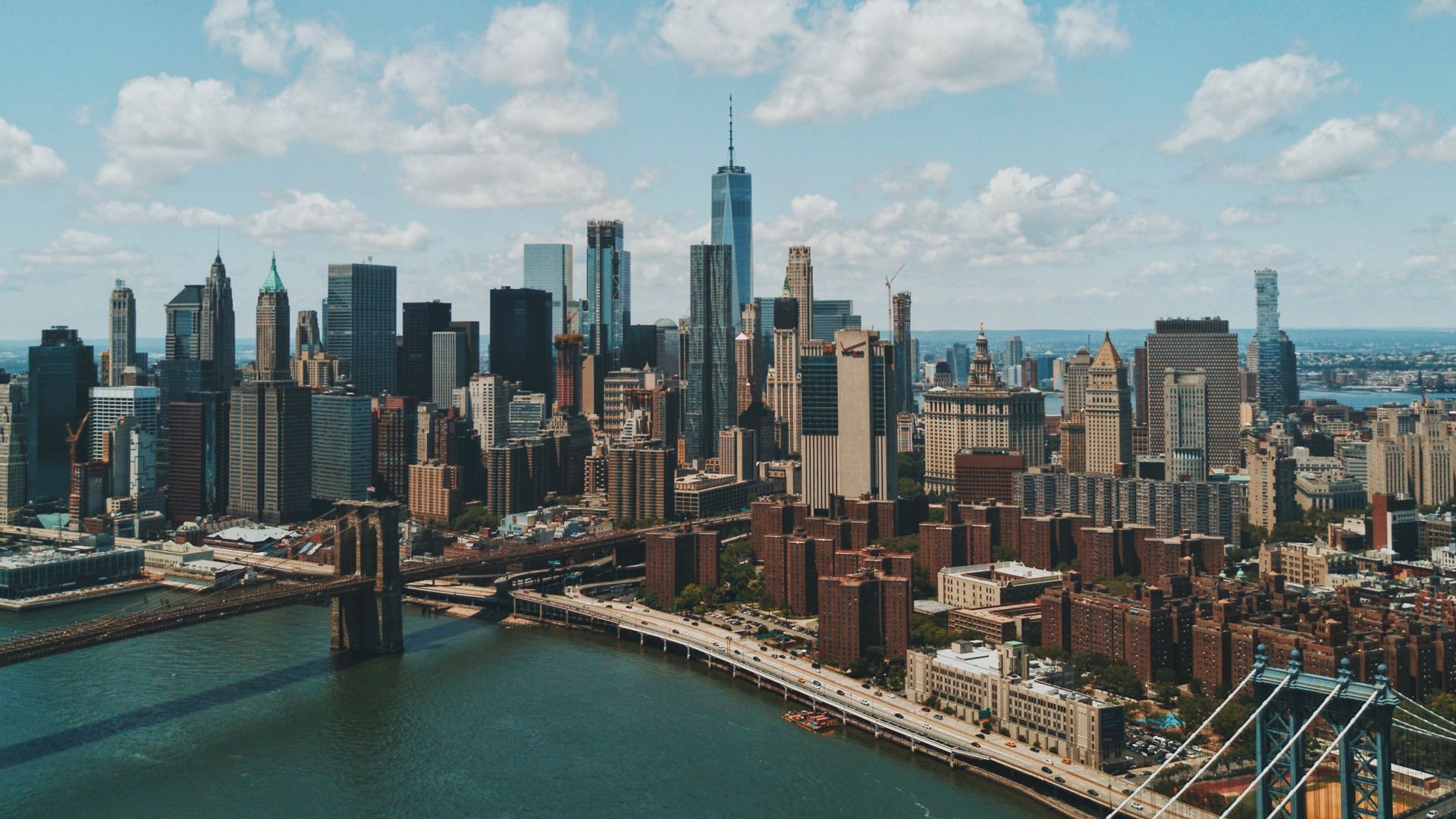Immigrants
•
11 mins read
•
August 12, 2021
The Immigrant's Guide to Commuting in New York
Everything you need to know about navigating your way around the boroughs, neighborhoods, and streets of New York.

New York, the city that never sleeps, is wonderful for many reasons and its extensive transport system certainly makes it stand out from the rest of the US. You can get anywhere in the city via public transport — and save a lot of money and time in the process.
However, New York's transport system can look pretty complex at first glance. Follow our guide to commuting and making your way through the streets of New York, so that you’re set to feel like a local in no time.

Subway
The New York subway system is one of the cheapest and the most popular ways for visitors to get around the city. And since it is not subject to NYC traffic lights and congestion, you can get from one
to another faster than in any taxi or bus.
Built under the streets of New York, this subway system is quite big and crowded, which might be intimidating for first-time visitors. However, because 6 million riders use the subway daily, you will have a lot of company whether you travel at noon or at midnight — making the subway one of the safest ways to move across the city.
Pricing:
$2.75 for a single ride.
How to use:
To access the subway, buy a MetroCard from the vending machines or ticket booths available at stations. Once you have the card, swipe it at the turnstiles whenever you enter the station.
The card costs $1 and can be purchased via coins, bills, and debit/credit cards. Plus, you can add as much as little money to it as you want, any time.
Aside from this, the
is the easiest way to pay for your fare if you have a contactless payment device or card — simply swipe it over the reader and your fare will be deducted.
Connectivity:
With 472 subways and 36 lines, this busy commute system connects four of New York's five boroughs (it does not cover Staten Island).
Type of commuter most suitable for:
The subway is ideal for
and office workers who need to travel from one part of the city to another, or for those who cannot shell out the big bucks for an Uber or cab.
Timings:
24 hours a day, seven days a week.
Bus
Operated by the
(MTA), almost 6,000 New York buses cover over 322 routes. It is an ideal option to explore the city and travel to destinations not possible with subways. However, due to New York’s traffic, the buses may not always be on time, and rides can usually take longer than expected.
Buses are of two types: local and express. Local buses stop every few blocks, whereas express buses only make a few stops along the route. Commuters from areas with limited subway options — like the Bronx or Staten Island — use buses as an option.
Pricing:
A fixed fare of $2.75 for the standard bus and $6.75 for the express bus.
How to use:
To use the public bus in New York, you need a MetroCard or an exact fare in coins to pay for the bus ride. Or, if you have a contactless payment card or smartphone device, the OMNY system can come in handy.
Just stand at the stop, and when the bus arrives, signal with your hand for it to stop. Also, check the route sign on the front of the bus before boarding to understand if it will make all stops or only limited ones.
Connectivity:
Operates throughout the five boroughs of NYC.
Type of commuter most suitable for:
Suitable for new
or first-time visitors who want to learn the city’s layout — or for people who’d like to, or need to, avoid the stairs in subway stations. This is because only
are accessible for wheelchair users. The rest either don’t have elevators, and even if they have, they’re often slow, broken, and can feel unsafe.
Timings:
24 hours a day, seven days a week.
Commuter Rail
With over 250 stations and 20 rail lines, the commuter rail is an excellent option for those travelling to distant parts of the city. It includes the NYC suburban train, Staten Island Railway, New Jersey Transit, Port Authority Trans-Hudson (PATH), Long Island Railroad, and Metro-North Railroad.
All these services run frequently and are reliable and safe. However, they can get crowded at rush hour (8 AM to 10 AM and 5 PM to 7 PM).
Pricing:
While this depends on the route, one-way tickets are usually between $2.40–$13.25.
How to use:
You can get individual journey tickets at any train station. Or you can also download the e-ticketing apps, like
, to buy tickets on your phone for Metro-North Railroad or Long Island Railroad.
Connectivity:
MTA and
are the two primary operators. While the MTA operates the Long Island Railroad on Long Island and the Metro-North Railroad in the Hudson Valley and Connecticut, the New Jersey Transit handles the west of the Hudson River.
Metro-North trains leave from Grand Central Station and take you to Connecticut and Westchester. In addition to this, the Long Island Railroad takes you to Manhattan, and New Jersey Transit takes you to New Jersey. Both of these services start from Penn Station.
Type of commuter most suitable for
: Visitors or commuters who need to travel to the more distant boroughs.
Timings:
24 hours a day, seven days a week.
Taxi
The streets of New York are flooded with over 13,000 iconic yellow taxis, licensed with the
. These taxis are easy to recognize, and you can find them on pretty much every corner of the Big Apple. Plus, they are clean, comfortable, and come equipped with a GPS so that riders can track their taxi driver’s route.
Pricing:
Fares start at $3 and increase as time and distance pass. Tolls are also paid in addition to the taxi fare.
How to use:
A cab is available if its roof light is on and those with roof lights off are already occupied. To hail a cab, stand at the edge of a curb, wave your han,d and try to make direct eye contact with the driver. If it’s hard to find a taxi, try to use ride-sharing apps, such as
and
, for a smoother process.
Connectivity:
Yellow taxis pick up passengers anywhere within the five boroughs.
Type of commuter most suitable for
: Suitable for those looking for a short ride across the streets of New York. You can also use a taxi if you're tired or aren't sure about the address.
Timings:
24 hours a day, seven days a week.
Ferry
New York City is surrounded by water and, luckily, there are various water channels to get you around the city, including the
and
. The ferry system currently has six routes, serving neighborhoods like the Rockaways, Lower Manhattan, and the Lower East Side.
Furthermore, ferries can be a pleasant transport option as they offer sprawling city views and refreshments on board.
Pricing
: $2.75 for a single trip and if you want to bring a bike, an extra $1 surcharge will be applied. A 30-day adult pass costs $121, and with a bike, it goes up to $141.
How to use:
The ferry boards on a first-come, first-serve basis. You can buy two types of tickets — single-ride or 30-day passes — which are available at electronic vending machines at all ferry landings. However, the easiest way to purchase your ticket is to download the
to get your ticket.
Connectivity:
Operational on six routes: East River, Rockaway, Astoria, Governors Island Shuttle, South Brooklyn, and Soundview.
Type of commuter most suitable for:
Ideal for those who want a quick and efficient way to get to and from work, head to NYC for dinner, catch a Broadway show, or simply enjoy the experience of commuting on the water!
Timings:
6:30 AM to 10 PM, 365 days a year.
So, whether you want to
visit tourist attractions, or simply navigate around the streets of New York, the transport options are endless. However, these can be pretty intimidating, especially if you're a first-time visitor to the city.
We do hope our guide helps you get to grips with the ins and outs of New York transportation, so that you’re now all set to enjoy everything the city has to offer to its visitors and residents!


